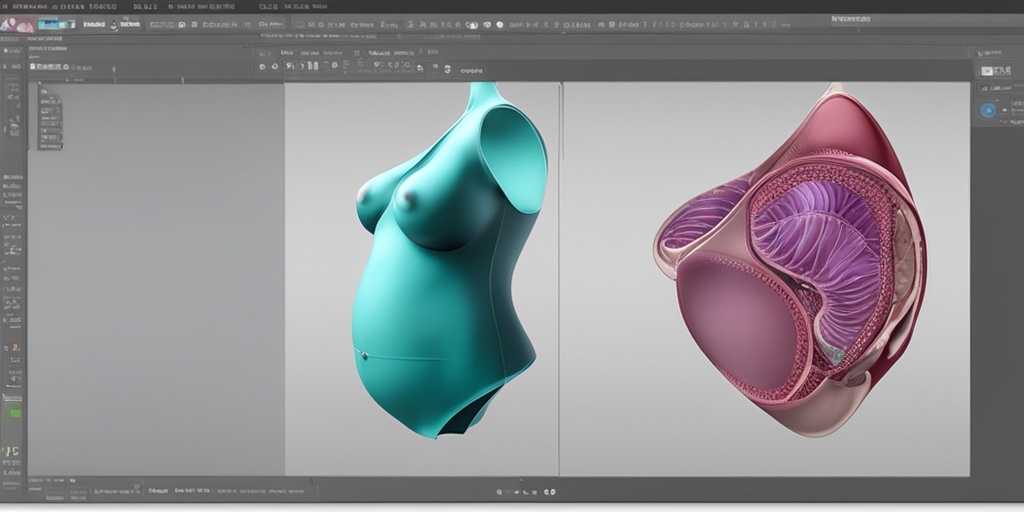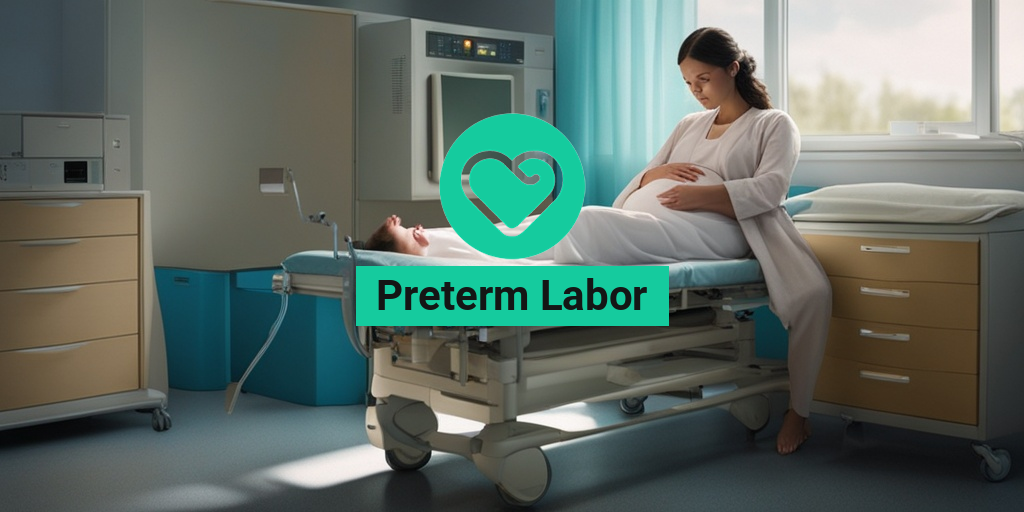What Is Preterm Labor?
Welcoming a new life into the world is a thrilling experience, but for some expectant mothers, the journey can be filled with uncertainty and worry. One of the most pressing concerns is preterm labor, a condition that affects thousands of pregnancies every year. But what exactly is preterm labor, and how can you identify its signs and symptoms?
Preterm Labor Definition
Preterm labor is defined as labor that occurs before 37 weeks of gestation. This means that if you’re experiencing contractions and your cervix is dilating before you’ve reached 37 weeks, you’re considered to be in preterm labor. Normally, a full-term pregnancy lasts between 39 and 40 weeks, so preterm labor can be a cause for concern.
Preterm labor can be further classified into two categories: spontaneous preterm labor and indicated preterm labor. Spontaneous preterm labor occurs when labor starts on its own, without any medical intervention. Indicated preterm labor, on the other hand, is when labor is induced or a cesarean section is performed due to a medical condition that poses a risk to the mother or baby.
It’s essential to understand that preterm labor is different from false labor, also known as Braxton Hicks contractions. False labor is a normal phenomenon that occurs in the third trimester, characterized by mild, irregular contractions that don’t lead to cervical dilation or labor.
Now that we’ve covered the basics of preterm labor, let’s dive deeper into its signs, symptoms, and causes in the next sections. 🤰♀️

Preterm Labor Symptoms
Are you experiencing some unusual symptoms during your pregnancy, and you’re wondering if they might be related to preterm labor? 🤔 It’s essential to recognize the signs and symptoms of preterm labor to seek medical attention promptly and ensure the best possible outcome for you and your baby.
What are the Common Symptoms of Preterm Labor?
Preterm labor symptoms can be subtle, and they may resemble normal pregnancy discomforts. However, it’s crucial to be aware of the following signs:
- Mild abdominal cramps, similar to menstrual cramps, that come and go
- Backache, which may be mild or severe, and can radiate to your sides or abdomen
- Contractions, which may feel like a tightening or hardening of your uterus, often accompanied by a change in your cervix
- Vaginal bleeding or spotting, which can be light or heavy
- Increased vaginal discharge, which may be clear, pink, or blood-tinged
- Frequent urination, as the uterus expands and puts pressure on the bladder
- Pelvic pressure, which may feel like your baby is pushing down
- Abdominal tenderness, which may be mild or severe
If you’re experiencing any of these symptoms, it’s essential to contact your healthcare provider immediately. They will assess your condition and determine the best course of action.
When to Seek Immediate Medical Attention
If you’re experiencing any of the following, seek immediate medical attention:
- Severe abdominal pain, which may be constant or come and go
- Heavy vaginal bleeding, which may be accompanied by clots or a gush of fluid
- Contractions that are very strong, frequent, or persistent
- A sudden gush of fluid, which may indicate your water has broken
Remember, it’s always better to err on the side of caution when it comes to your health and your baby’s well-being. If you’re unsure about any symptoms or concerns, don’t hesitate to reach out to your healthcare provider.
Preterm Labor Causes and Risk Factors
Preterm labor can occur without any identifiable cause, but there are certain risk factors that can increase the likelihood of preterm labor. Understanding these causes and risk factors can help you take proactive steps to reduce your risk and ensure a healthy pregnancy.
What Causes Preterm Labor?
The exact cause of preterm labor is often unknown, but several factors can contribute to its occurrence:
- Infection, such as a urinary tract infection or a vaginal infection
- Hormonal changes, which can trigger contractions
- Fetal distress, which can cause the baby to release hormones that stimulate labor
- Placental abruption, which can cause bleeding and contractions
- Multiple pregnancy, which can increase the risk of preterm labor
- Uterine or cervical abnormalities, which can increase the risk of preterm labor
While these factors can contribute to preterm labor, it’s essential to remember that many women who experience preterm labor do not have any identifiable cause.
Who is at Risk of Preterm Labor?
Certain women are at a higher risk of preterm labor, including those who:
- Have a history of preterm labor in a previous pregnancy
- Are carrying multiples, such as twins or triplets
- Have a history of cervical surgery or cervical insufficiency
- Have a family history of preterm labor
- Are under 17 or over 35 years old, as these age groups are at a higher risk of preterm labor
- Have certain medical conditions, such as high blood pressure, diabetes, or kidney disease
While these risk factors can increase the likelihood of preterm labor, it’s essential to remember that many women who experience preterm labor do not have any identifiable risk factors.

Preterm Labor Diagnosis
Receiving a preterm labor diagnosis can be a stressful and overwhelming experience for expectant mothers. It’s essential to understand the signs and symptoms of preterm labor to ensure timely medical attention and proper care. In this section, we’ll delve into the diagnosis process and what to expect.
What are the Signs and Symptoms of Preterm Labor?
Preterm labor can be asymptomatic, making it crucial to recognize the subtle signs and symptoms. Some common indicators of preterm labor include:
- Contractions: Frequent, intense, or persistent contractions that feel like menstrual cramps or a tightening sensation in the abdomen.
- Back Pain: Persistent or severe back pain, especially in the lower back.
- Vaginal Bleeding: Light bleeding or spotting, which can be a sign of cervical changes or placental abruption.
- Cramping: Mild or severe cramping in the abdomen or pelvis.
- Pressure: Feeling of pressure in the pelvis or vagina.
- Change in Vaginal Discharge: Increase in vaginal discharge, which can be a sign of cervical changes.
How is Preterm Labor Diagnosed?
A healthcare provider will typically perform a physical examination, review medical history, and conduct diagnostic tests to confirm a preterm labor diagnosis. These tests may include:
- Uterine Monitoring: External uterine monitoring to track contractions and fetal heart rate.
- Vaginal Exam: A pelvic exam to assess cervical dilation, effacement, and station.
- Ultrasound: An ultrasound to evaluate fetal growth, development, and amniotic fluid levels.
- Fetal Fibronectin Test: A test to detect the presence of fetal fibronectin, a protein that can indicate preterm labor.
- Group B Strep Test: A test to detect Group B strep bacteria, which can increase the risk of preterm labor.
What is the ICD-10 Code for Preterm Labor?
The ICD-10 code for preterm labor is O60.00-O60.03, which is used to classify and code preterm labor diagnoses for medical billing and insurance purposes.
Preterm Labor Treatment Options
Once a preterm labor diagnosis is confirmed, the primary goal is to delay delivery and reduce the risk of complications. Treatment options vary depending on the severity of preterm labor, gestational age, and individual circumstances. Here are some common treatment options:
Bed Rest and Modified Bed Rest
Bed rest is often recommended to reduce physical activity and alleviate symptoms. Modified bed rest may involve:
- Reduced Activity: Limiting physical activity to minimize contractions and reduce stress on the uterus.
- Pelvic Rest: Avoiding heavy lifting, bending, or straining to reduce pressure on the cervix.
Medications for Preterm Labor
Medications may be prescribed to:
- Delay Delivery: Tocolytics, such as nifedipine or indomethacin, can help slow or stop contractions.
- Reduce Inflammation: Corticosteroids, like betamethasone, can reduce inflammation and promote fetal lung development.
- Prevent Infection: Antibiotics may be prescribed to prevent or treat infections, such as Group B strep.
Hospitalization and Monitoring
In some cases, hospitalization may be necessary to closely monitor the mother and fetus. This can involve:
- Continuous Fetal Monitoring: Monitoring fetal heart rate and movement to detect any changes or complications.
- Uterine Monitoring: Tracking contractions and uterine activity to adjust treatment as needed.
It’s essential to work closely with a healthcare provider to develop a personalized treatment plan that addresses individual needs and circumstances. By understanding the diagnosis and treatment options, expectant mothers can take an active role in managing preterm labor and ensuring the best possible outcome for themselves and their baby. 🤰♀️

Preterm Labor Complications
Preterm labor, also known as premature labor, is a serious pregnancy complication that can have significant consequences for both the mother and the baby. When a woman goes into labor before 37 weeks of gestation, it’s considered preterm labor. In this article, we’ll delve into the potential complications that can arise from preterm labor.
Risks to the Baby
Babies born prematurely are at a higher risk of health problems and developmental delays. Some of the potential complications include:
- Respiratory Distress Syndrome (RDS): Premature babies may not have fully developed lungs, which can lead to breathing difficulties.
- Neonatal Infections: Premature babies are more susceptible to infections, which can be life-threatening.
- Developmental Delays: Premature babies may experience delays in physical and cognitive development.
- Cerebral Palsy: Premature babies are at a higher risk of developing cerebral palsy, a neurological disorder that affects movement and muscle tone.
Risks to the Mother
Preterm labor can also have significant consequences for the mother’s health. Some potential complications include:
- Placenta Previa: A condition where the placenta partially or completely covers the cervix, which can cause bleeding and other complications.
- Placental Abruption: A condition where the placenta separates from the uterus, which can cause bleeding and deprive the baby of oxygen and nutrients.
- Infections: Preterm labor can increase the risk of infections, such as chorioamnionitis, which can be life-threatening.
- Emotional Trauma: Preterm labor can be emotionally distressing for the mother, leading to anxiety, depression, and post-traumatic stress disorder (PTSD).
Preterm Labor Prevention Strategies
While it’s not possible to completely eliminate the risk of preterm labor, there are several strategies that can help reduce the risk. Here are some prevention strategies to consider:
Lifestyle Changes
Making healthy lifestyle changes can go a long way in reducing the risk of preterm labor. Some strategies include:
- Proper Prenatal Care: Regular prenatal check-ups can help identify any potential issues early on.
- Healthy Diet: Eating a balanced diet rich in fruits, vegetables, and whole grains can help support a healthy pregnancy.
- Stress Management: Managing stress through techniques like meditation, yoga, and deep breathing can help reduce the risk of preterm labor.
- Avoiding Substance Abuse: Avoiding tobacco, alcohol, and other substances can help reduce the risk of preterm labor.
Medical Interventions
In some cases, medical interventions may be necessary to reduce the risk of preterm labor. Some strategies include:
- Cerclage: A surgical procedure where a stitch is placed in the cervix to help keep it closed.
- Progesterone Therapy: Supplemental progesterone can help reduce the risk of preterm labor in women with a history of preterm birth.
- Bed Rest: In some cases, bed rest may be recommended to reduce the risk of preterm labor.
Remember, every pregnancy is unique, and what works for one woman may not work for another. If you’re at risk of preterm labor, it’s essential to work closely with your healthcare provider to develop a personalized prevention strategy. 🤰♀️

Frequently Asked Questions about Preterm Labor
What are the signs and symptoms of preterm labor?
Women experiencing preterm labor may exhibit symptoms such as:
- Contractions that feel like menstrual cramps or a tightening sensation in the abdomen
- Backache or pelvic pressure
- Vaginal bleeding or spotting
- Abnormal vaginal discharge
- Frequent urination
What are the causes of preterm labor?
Preterm labor can be caused by various factors, including:
- Previous preterm birth or miscarriage
- Multiple pregnancy (twins, triplets, etc.)
- Infections such as urinary tract infections or vaginal infections
- Chronic medical conditions like high blood pressure or diabetes
- Placenta previa or abruption
How is preterm labor diagnosed?
Preterm labor is typically diagnosed through a combination of:
- Physical examination by a healthcare provider
- Ultrasound to check fetal development and placenta position
- Fetal heart rate monitoring
- Vaginal swab or urine test to detect infections
What are the treatment options for preterm labor?
Treatment for preterm labor may involve:
- Bed rest or modified bed rest
- Medications to stop contractions or reduce symptoms
- Hospitalization for close monitoring
- Corticosteroids to promote fetal lung development
- In some cases, cervical cerclage or progesterone therapy
Can preterm labor be prevented?
While it’s not possible to completely prevent preterm labor, certain steps can reduce the risk:
- Regular prenatal care and monitoring
- Proper nutrition and hydration
- Avoiding stress and getting enough rest
- Quitting smoking and avoiding substance abuse
- Getting enough folic acid and prenatal vitamins
What are the risks associated with preterm labor?
Babies born prematurely may face:
- Respiratory distress syndrome
- Infections and other health complications
- Developmental delays or disabilities
- Increased risk of cerebral palsy
What can I do if I’m at risk of preterm labor?
If you’re at risk of preterm labor, it’s essential to:
- Follow your healthcare provider’s instructions and advice
- Attend regular prenatal appointments and monitoring
- Take medications as prescribed and follow treatment plans
- Stay hydrated, rest, and manage stress
Remember, if you’re experiencing any symptoms or concerns, always consult your healthcare provider for personalized guidance and care. 🤰♀️




